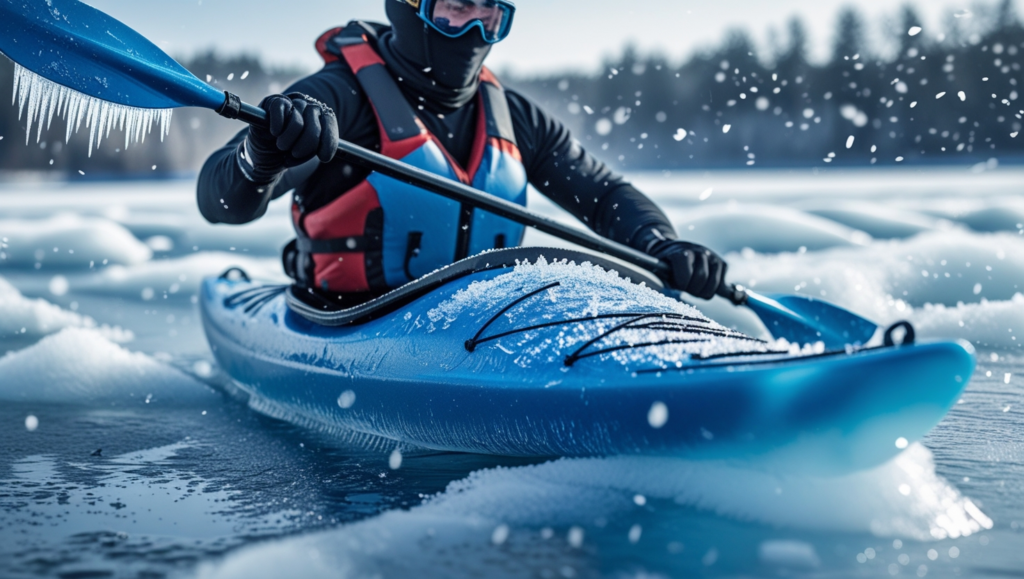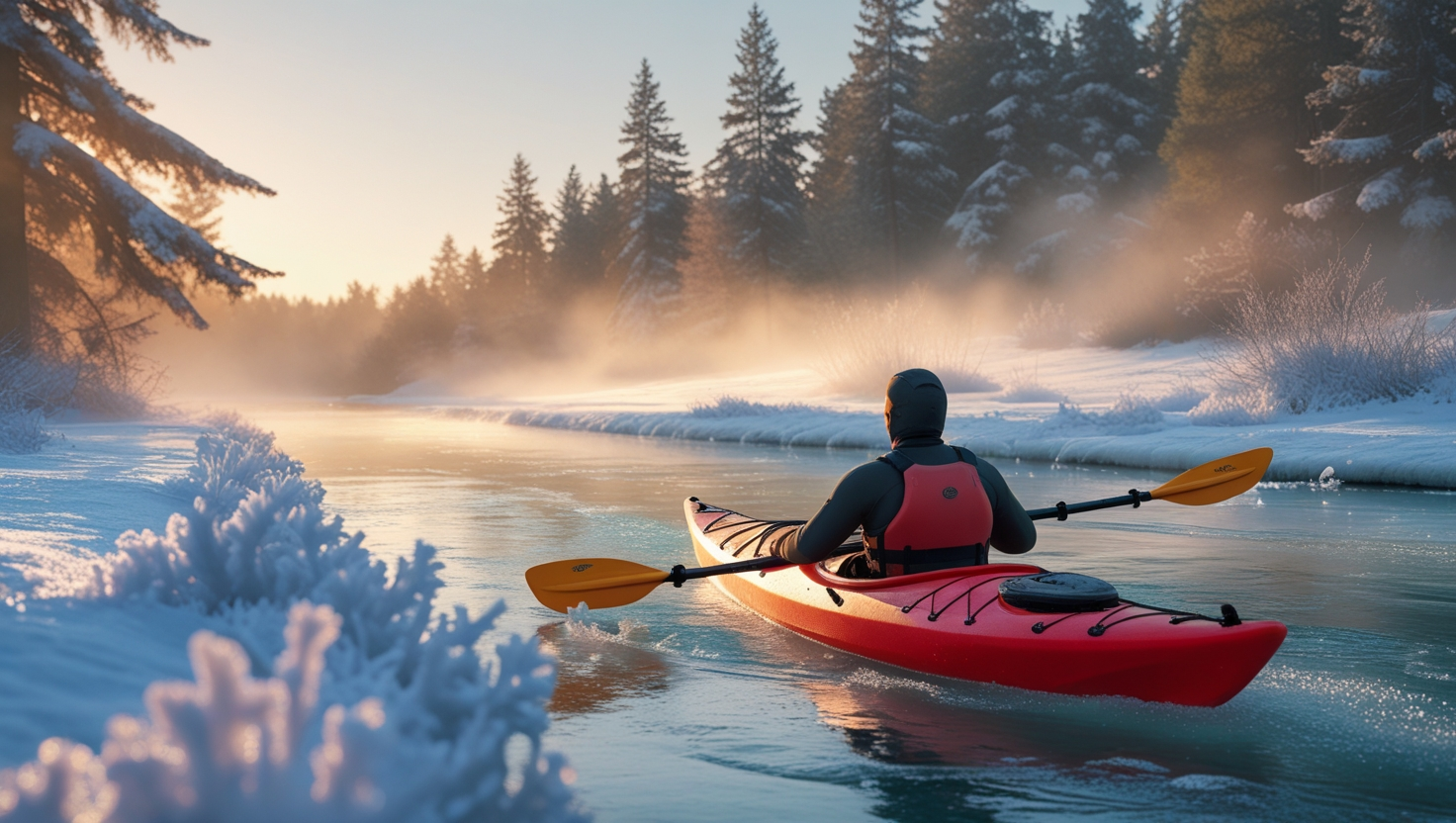
Can You Kayak in the Winter: The Emotional Pull of Winter Paddling
There’s something deeply peaceful about paddling across a frozen lake or quiet river as snowflakes drift down and silence surrounds you. If you’ve ever wondered can you kayak in the winter, you’re not alone. It’s a question many outdoor lovers ask as temperatures drop. And while it might seem extreme at first, the truth is—winter kayaking can be one of the most exhilarating and serene experiences out there.
But there’s a fine line between thrill and risk. That’s why preparing correctly, understanding your limits, and respecting winter conditions are all crucial. This guide is here to equip you with practical, no-fluff advice so you can hit the icy waters safely, confidently, and with a whole new level of adventure.
Why the Question ‘Can You Kayak in the Winter?’ Matters More Than You Think
Understanding the Real Risks of Winter Kayaking

- Cold Water Shock: Exposure to freezing water can send your body into panic mode—rapid breathing, gasping, and increased heart rate.
- Hypothermia: A real threat even on short trips if you’re not dressed properly.
- Reduced Daylight: Winter paddling means shorter trips, especially in remote areas.
- Ice Hazards: Slippery launches, ice floes, and frozen patches can damage your kayak or trap you unexpectedly.
Why Some Still Choose to Paddle in Winter
- Total solitude and peaceful surroundings
- Crisp air and improved visibility
- Wildlife sightings not common during warmer months
- Building skill and mental toughness
Can You Kayak in the Winter Safely? Here’s What You Need to Know
1. Dress for Immersion, Not Just the Weather
When winter kayaking, it’s not about staying warm in the air—it’s about being protected in the water.
- Dry suit or wet suit (preferably a dry suit with thermal base layers)
- Neoprene gloves and booties
- Wool or synthetic fabrics (avoid cotton)
- Thermal hat and neck gaiter
2. Choose the Right Kayak for Winter Conditions
Your gear can make or break your cold-water trip.
- Sit-inside kayaks are better than sit-on-top models for insulation
- Sea kayaks with bulkheads offer extra safety
- Spray skirts help keep icy water out
- Skegs and rudders for improved control in icy currents
3. Know the Water and Weather Forecast
Always check:
- Water temperature (anything below 60°F is considered cold water paddling)
- Wind speeds (even 10 mph can be dangerous in winter)
- Ice coverage on launch sites or rivers
- Precipitation chances and potential whiteout conditions
4. Never Paddle Alone
Cold-weather kayaking increases the risks of accidents—and decreases the chance of self-rescue. Make sure to:
- Bring at least one paddling partner
- Share your float plan with someone you trust
- Use marine radios or emergency beacons
5. Learn Essential Winter Kayaking Safety Techniques
- Wet exits and re-entries in cold conditions
- Assisted rescues with your paddling group
- Bracing in windy or choppy conditions
- Reading icy or snow-covered riverbanks for signs of hazards
Can You Kayak in the Winter Without Specialized Gear?
Short answer: No, and here’s why.
| Essential Gear | Why It’s Critical |
|---|---|
| Dry Suit | Keeps you dry in freezing water |
| PFD (Life Jacket) | Increases buoyancy and visibility |
| Thermal Layers | Maintains body heat under dry suit |
| Spray Skirt | Prevents icy water from entering cockpit |
| Bilge Pump & Sponge | Removes water from your kayak |
| Emergency Whistle | Signals for help in low-visibility weather |
Mindset Shift: Stop Asking ‘Can You Kayak in the Winter?’—Start Asking ‘How Can You Kayak Safely in the Winter?’
This change in approach puts the power back in your hands. Yes, kayaking in cold weather is possible, but only with the right mindset and preparation.
FAQs: Can You Kayak in the Winter?
Can you kayak in the winter if you’re a beginner?
Yes, but it’s recommended that beginners go with experienced paddlers and take a cold-water safety course first.
What is the coldest temperature you can kayak in?
There’s no fixed number, but once water drops below 50°F, you must wear proper immersion gear. Most experts advise against kayaking below freezing unless extremely experienced.
Can you kayak in the winter with a sit-on-top kayak?
Technically, yes—but it’s not ideal. Sit-on-tops expose your lower body to cold air and splashes, increasing hypothermia risks.
How do you keep warm while kayaking in the winter?
Layer correctly (thermal base layers + dry suit), paddle consistently to generate body heat, and stay dry at all costs.
Is winter kayaking worth the effort?
Absolutely. For many, it becomes the most rewarding season for paddling. The quiet, untouched beauty of winter rivers and lakes is simply unforgettable.
Final Thoughts: So, Can You Kayak in the Winter?
Yes—you absolutely can. But only if you’re prepared, properly dressed, and equipped with the knowledge to handle what winter throws at you. It’s a season full of challenges, but also full of magic. Don’t let cold weather keep you from discovering a deeper level of adventure on the water. Equip yourself, respect nature’s winter mood, and paddle forward safely.
Ready to take the plunge? Start small, plan smart, and transform winter from an off-season to your best paddling season yet.


1 thought on “Can You Kayak in the Winter? 9 Powerful Tips for Cold-Weather Paddling”